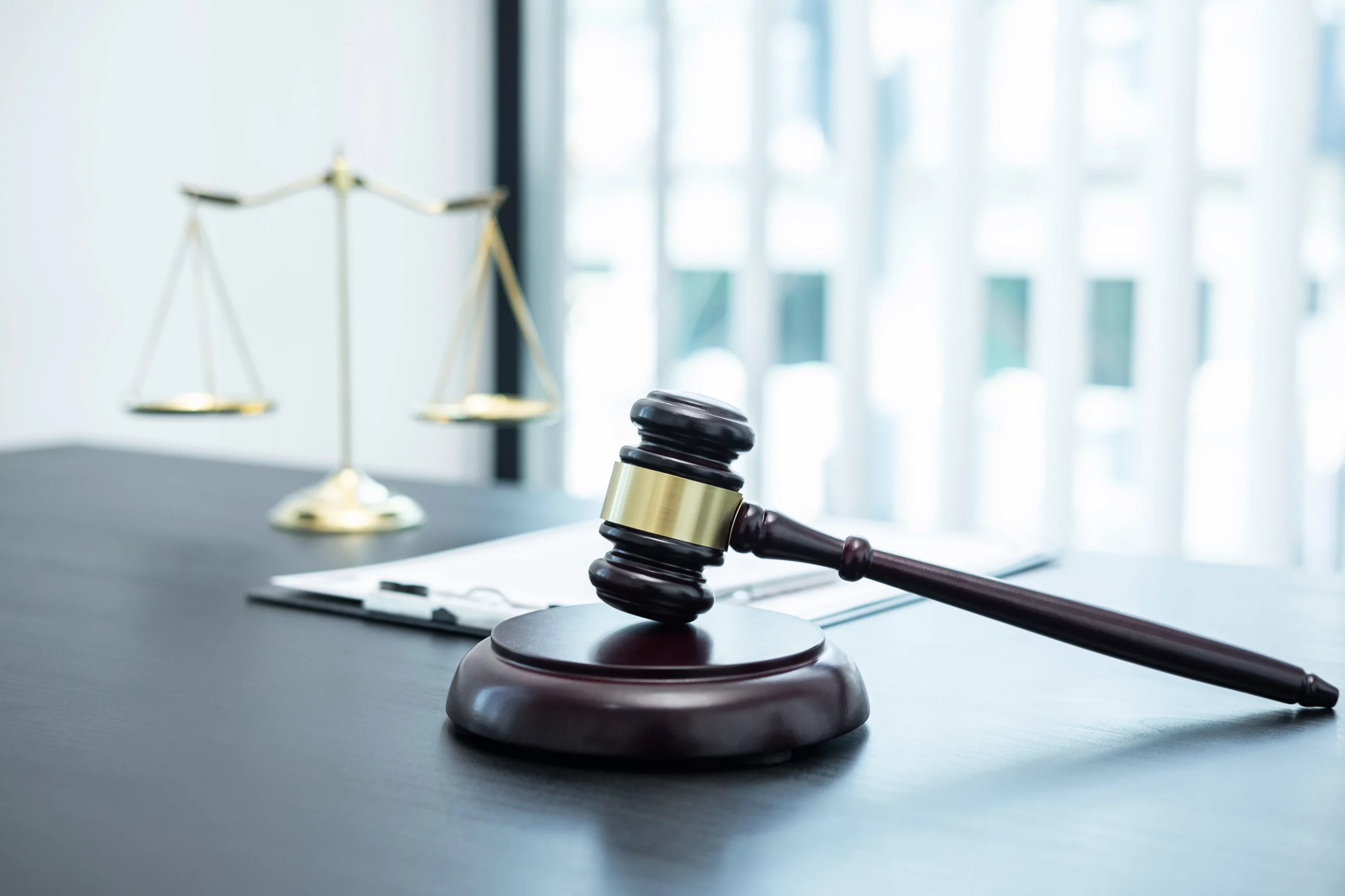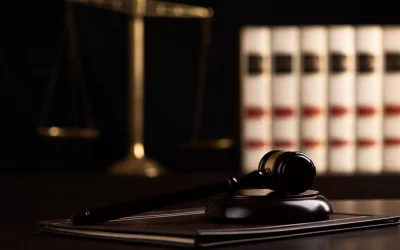It’s normal to have many questions after an auto accident, dog bite, or other personal harm. Most of this information is available online, but it may be difficult to obtain, complex, and convoluted.
As a result, the personal injury lawyers at Warrior Law have put together a comprehensive guide to assist you. To assist you in comprehending the Colorado legal system while our lawyers handle your case, we’ve created our Injury Guide.
We want you to be able to focus on your recovery and not worry about unanswered questions, so we’ve provided these tools to assist you.
While this Guide focuses mostly on car accidents, the essential processes are the same in all personal injury cases.
The First Things To Do After A Car Crash
According to the National Highway Traffic Safety Administration, car accidents range from simple fender benders to deadly wrecks. In the event of an accident, knowing what to do at the moment may help save lives, decrease injuries, and make the claims process smoother and less time-consuming.
Adrenaline and disorientation are common reactions to accidents. After an accident, drivers should take these procedures to ensure the safety of everyone involved.
1.The first step is to lift the cover.
Even if the collision looks small, the parties involved should never leave the site. The parties should relocate themselves and their cars out of traffic or away from any additional danger of injury, but they should remain near the site of the accident.
Set up emergency cones or triangles to notify other cars of your situation. The cars of the parties should not be moved unless it obstructs traffic. They should also wait until it is safe to get out of their car.
2. call the police.
Not reporting an injury-causing accident is a crime in several states. The police should still be called even if there are no major injuries and the collision is small. The officer will simply fill up an incident report, which serves as a means of exchanging information and documenting the facts of the case.
To help with the insurance procedure and prove legal guilt, the officer will produce an accident report if the accident is more severe. Property damage may need a police complaint. A police report gives an impartial account of the incident and prevents either side from altering their story after the fact.
When the police come, everyone involved in the incident should give the officer a full account of what transpired. There should be no room for guesswork or misinterpretation of facts regarding a car accident.
If questioned about injuries, it is acceptable for the parties to tell the officer that they are unsure. After an accident, it’s not uncommon for injuries to become evident hours or days later.
3. TAKE PHOTOS OF YOUR EVENTS
If possible, the people involved in the collision should take photos of the incident. Any obvious injuries should be documented using pictures. It is crucial to avoid interfering with the current police investigation. If photographing the site of an accident is impractical, the people involved should do so as quickly as feasible.
4. EXCHANGE PHONE NUMBERS AND NOTIFY YOUR INSURANCE COMPANY OF THE ACCIDENT
Regardless of whether or not authorities arrive on the scene, all involved in the collision should exchange contact information, including names, addresses, and phone numbers. Parties should also get the names and telephone numbers of any witnesses who may be present. In a trial, the testimony of witnesses will be critical to both sides.
They should also share insurance information with other parties involved. They should be sure to provide the name and policy number of the insurance company. As quickly as possible, contact your insurance carrier and give them this information so that they can investigate the incident.
In many cases, a claim cannot be considered without prompt notification and cooperation from the claimant. Medical Payments and Uninsured/Underinsured Motorist coverage are vital to know about a person’s insurance policy.
5. GET IMMEDIATE MEDICAL HELP IF NEEDED
Accidents might create injuries that aren’t immediately noticeable. In reality, as personal injury lawyers, we often see clients who claim to be in agony days or even weeks after a car accident.
If you are unsure whether or not you’ve been hurt, we strongly urge that you seek immediate medical assistance at a local emergency department or your primary care physician. Even modest collisions may result in catastrophic or long-term injuries, even if the impact is minimal.
6. Speak with one of our Denver personal injury attorneys. We can help.
After being involved in a car accident, it’s critical to speak with a qualified personal injury attorney. Personal injury attorneys at Warrior Injury Law may examine your accident from a legal standpoint to safeguard your rights and prevent the destruction of important evidence.
Insurance adjusters often try to get early statements from the parties involved when an accident occurs. Before interacting with the insurance company, you should get legal counsel since anything you say might be used against you in the event of a lawsuit. The advice of a lawyer may be invaluable in a wide range of situations, from securing compensation for injuries and property damage to negotiating with insurance companies. Because they are paid on a contingency basis, personal injury attorneys do not charge you a fee until you get compensation for your losses.
After an Accident, the Most Common Mistakes People Make
Like any major city, Denver’s roads see heavy traffic daily, made worse by the rising number of people who choose to drive. Motor vehicle accidents are more likely to occur when vehicles on the road grow. Some car accidents are minor fender benders that can usually be resolved by contacting the insurance company directly. In contrast, others are more serious and may result in bodily injury, death, or severe damage. Accident victims and their families may be devastated and unsure of how to proceed, making it more likely that they will make errors.
Please contact our personal injury attorneys for advice.
To their own disadvantage, some individuals seek to negotiate a settlement with the insurance company. Be aware that insurance adjusters are recruited to reduce the money they must pay out claims. Their primary objective is to keep you from being paid. A lot of times, symptoms of an injury may not appear for weeks or months after the fact. If a claim is settled before the victim knows the full degree of their injuries, the settlement will fail to account for any future issues. It is critical to seek the advice of an experienced Denver personal injury lawyer. Victims should also be aware of and strive to avoid the following typical blunders:
1. Failing to get medical attention quickly
Many people in car accidents believe they can “shake it off.” In mild impacts, this is particularly true. Even if you believe everything is alright, you should consult a doctor immediately. If you’ve been in an accident, it’s important to be assessed and treated for any potential injuries, particularly to the back and neck structures, which may take hours or days to become evident. It’s important to record your medical care as soon as possible so that insurance companies have a “paper trail” to work in the event of a disagreement.
As endorphins assist people in recovering from trauma, they may conceal pain and suffering for a long period following a high-stress episode. The first thing you should do if you think you’ve been injured is to seek medical assistance immediately. Regardless, you’ll know if anything is amiss so that you may fix it.
2. Failure to report a crime to the police
Calling the police is always the right thing to do. It is also criminal in Colorado not to contact the authorities if an accident results in injuries. You may be urged not to file a police complaint if the person at fault begs you to do so.
They may apologize profusely and tell you how sorry they are, or they’ll have a different motive for avoiding the police. Even if you are sympathetic to their plight, refrain from acting this way!
Even if you don’t contemplate the long-term legal, physical, and emotional repercussions at the time of the occurrence, you might be on the hook for them later. You can prevent this kind of conduct by having the accident thoroughly examined by a police investigator.
3. ASSIGNIFICATION OF YOUR HANDS TO ANYTHING
It’s never a good idea to put anything on paper without first consulting an attorney. You should expect to get a slew of paperwork from the at-fault driver’s insurance company shortly after the collision.
Before signing anything from the insurance company, speak with an attorney to analyze the papers and understand their purpose and legal consequences. Your injuries and treatment will play a major role in determining the value of your claim. You might endanger your claim without realizing it if you make an error in a written statement or sign a medical release.
4. RECOGNITION OF YOUR NEGLIGENCE
To admit guilt is to assume full responsibility for the mishap. Instead of blaming yourself for the accident, you should allow the authorities to perform their investigation without your involvement or input.
Let the facts speak for themselves, and do your best to remember them. It’s possible that the real cause of the collision was something you didn’t see, such as a motorist who applied the brakes unexpectedly. Insurance companies rely heavily on police reports to piece together the whole story of what transpired.
Insurance companies rely on the police report to determine who made a mistake since it is more trustworthy than the narratives of the people involved (especially when numerous parties have conflicting perspectives and naturally reflect personal biases).
- Medical providers should be informed of any prior accidents or medical conditions.
Sharing vast databases of information across insurance firms is common practice. This is a luxury that neither your lawyer nor your doctor can afford. Your credibility will be tarnished if you neglect to disclose or falsify your medical history throughout your accident medical care. Your medical history and past accidents must be fully disclosed to those who want to assist you.
Please don’t withhold information from your doctors because you believe it is irrelevant or won’t come up in your treatment. In the event of an accident, even if you have had previous injuries or accidents, you are still entitled to full compensation and recovery.
6. INCREASING PERSONAL HURT
Compensation claims often focus on the extent of a plaintiff’s physical and emotional suffering throughout the lawsuit. It’s a big mistake to whine or act worse than you are. Neither the insurance company nor a jury will be duped.
A few insurance firms have employed private detectives with video cameras to follow claimants and record any bogus claims they may make. Since of your back issue, you should not go to the grocery store and carry a 50-pound bag of dog food because you cannot lift and play with your baby.
Your assertion will be undermined, and your credibility will be tarnished. Exaggerating the severity of a valid ailment or claiming an injury you don’t have is unethical.
7. This is an example of failure to return after a leave of absence or returning too quickly to work.
Due to financial constraints, many sufferers return to work earlier than they should. Following your doctor’s advice is crucial if he or she tells you to take time off from work. He’s the expert, and insurance companies may check to see whether you’ve followed medical advice appropriately. When your doctor says it’s safe, attempt to return to work as soon as possible.
There is a good chance you won’t get paid if a doctor doesn’t tell you to take time off from work. Ask your doctor to help you if you believe you cannot work due to a medical condition. Ask for a written letter from your doctor if you feel that he or she agrees with your assertions. Regardless of whether or not you need it for your employer, you will for your accident claim.
8. Failing to Maintain Records.
Medical documents and invoices will be collected by your lawyer for submission to the insurance company with your settlement claim when necessary. Keep a copy of all of your bills for your records.
Keep note of all medical practitioners’ names, addresses, phone numbers, and specializations. Be careful to save any invoices relating to the injury, such as those for medicines and medical equipment.
Note how you feel and how your injuries influence your everyday life in the immediate aftermath of the event. It may take months, if not years, for your complaints to be resolved. Eventually, individuals forget the full amount of their physical and emotional agony and suffering. Don’t overstate any of the following facts.
9. WELCOME TO A FAST AND EASY RESOLUTION
Keep in mind that the insurance company is a for-profit corporation that gives settlements as cheap as possible, so keep that in mind whenever possible. This is a normal strategy for insurance companies, who hope that a speedy settlement would be more enticing to you than the total compensation you are entitled to, which may take longer.
Insurance firms strive to induce injured individuals to settle early. The early aftermath of a personal injury might cause victims to make ill-advised judgments because of the emotional stress, financial pressure, and urgent medical needs. You might make judgments that you’ll regret for a long time if you take action too hastily.
10. Ignoring the need to speak with an accident attorney.
Make an appointment with Warrior Injury Law for a free consultation. Our injury attorneys help you avoid these and other common pitfalls.
Photographing the Scene of a Car Crash in an Efficient Manner
Regardless of the circumstances, photographing the scene of a car accident or any other personal injury is vital. Personal injury lawsuits need copious amounts of photographic evidence. The use of images aids in the removal of any ambiguity and the assignment of responsibility.
A visual representation of the accident is significantly more persuasive in a claim or trial than just recounting the events verbatim. As a rule of thumb, all people involved in an automobile collision should photograph the incident if it is feasible.
The safety of everyone involved in an accident and any witnesses is of the utmost importance. If you’re waiting for help after an accident, contact 911 immediately and make sure your location is safe.
When required, move cars out of the way of traffic, attempting to maintain the scene’s integrity as much as possible. While the cops are on their way, begin taking photos. To get a good picture of the situation at the moment of the crash, this is the best time to shoot it.
Think like an insurance assessor while taking images for your claim. The sequence of events, the physical surroundings, and any indications of carelessness or the cause of the accident must all be seen.
Use the time-stamp feature on your camera to record important moments. Take far more shots than you think you need to get a better representation of the situation. To set the scene for the more detailed photographs, take a series of broad shots from various perspectives.
Take photos of all road signs, including stop signs, cautions, and other directions for drivers. Photograph the automobiles as near as possible to the scene of the collision. There should be close-ups showing damage to both vehicles, as well as a broad view of the scene of the collision. Photograph any impact-related debris that may be present.
It’s also a good idea to get some shots of the weather. Despite their seeming insignificance at the time, weather conditions such as rain and ice might provide light on the accident’s root cause. Photographing tire tracks is also a good idea. To determine a driver’s carelessness, examine the skid marks’ length, width and direction.
As the last step, the parties should take pictures of everyone there. This covers both drivers and passengers, bystanders, police, and paramedics. It will be easier to match names with remarks if you have a picture of the persons there.
Photographs might be used to eliminate misunderstandings over the identities of participants and witnesses. If at all feasible, take pictures of the wounds, such as lacerations, contusions, abrasions, bleeding, and any fractured bones.
It’s critical to acquire further proof the next day. An injury’s healing phase should be documented with regular photographs. Discoloration, edema, and latent injuries may not be seen for a few days. Make a note of them when they happen. Returning to the area with a higher-quality digital or high-resolution camera to capture anything you missed the first time may also be worthwhile.
The last thing most people want to do after being in a vehicle accident gets out their cameras. Photographs of the incident, on the other hand, may serve as proof of what occurred, disprove competing explanations, and assist in determining who is responsible and who should get compensation.
A Personal Injury Lawsuit’s Various Damages
In personal injury situations, the negligent party’s insurance company often compensates the injured party. Negotiations between the parties or a judicial decision may accomplish this. Most personal injury damages are “compensatory,” meaning they’re meant to compensate for the harm a victim has suffered as a result of the accident.
The goal of a compensatory damage award is to restore the harmed party’s financial well-being to the fullest degree feasible. For example, compensation for property damage, medical expenses, and lost earnings is straightforward to calculate. Other damages, on the other hand, are more difficult to quantify.
You may be entitled to compensation for these losses when you work with Warrior Injury Law
FURTHER INJURIES
Injuries sustained in car accidents often heal within a year, but 25% of victims will suffer from chronic pain for the rest of their lives. Some will improve over two years after trauma, while others may not even improve after that time. According to one research, 86% of pedestrian accident victims reported long-term residual discomfort, with 68% showing degenerative changes on X-ray imaging after an average of 10.8 years. In addition, separate research indicated that 43 percent of patients injured in a car accident two years later still felt some difficulty.
Forty-three percent of pedestrians injured in a collision are likely to experience long-term effects. People who have been wounded in a vehicle accident will likely suffer from degenerative illnesses for a long time since the ligaments and muscles in their bodies do not completely mend after an injury.
DAMAGES THAT ARE NOT ECONOMICAL
When it comes to compensable damages in personal injury claims, pain and suffering damages often cover a broad range of intangible injuries about emotional and mental anguish and physical pain and discomfort. There are many different types of physical pain, and they are all caused by the activation of certain nerve endings in the body, which results in the sense of discomfort, misery, or anguish.
The term “suffering” may refer to various mental or emotional states a victim may experience due to their damage. A large variety of emotional reactions may accompany or occur independently of physical harm when considering the many definitions of suffering, which is why no one definition can be relied upon.
The state’s courts have ruled that mental distress, including apprehension, anguish, worry, shock, shame, and indignity, constitutes an aggravation of damages where it naturally follows from the conduct complained of.
Agony in Colorado courts is referred to as “physiological,” although “suffering” is more apt to describe psychological pain. Suffering, on the other hand, is more concerned with how a person responds emotionally to the physical feelings that occur from an injury.
A method for calculating pain and suffering does not exist since there is no evident way to evaluate these things. To account for non-economic pain and suffering, juries and insurance adjusters often double monetary damages by two to three times.
Damages in return for wrongdoing
A jury in Colorado may impose punitive or exemplary damages in addition to real damages if the defendant’s behavior is accompanied by circumstances of fraud, malice, or intentional and wanton conduct. Weakness of character is defined as “willful and wanton behavior,” which indicates that the defendant must have been aware of the risk of their acts, done without regard to repercussions or the rights and safety of others. The unjust conduct must have been motivated by a nefarious intent to be eligible for exemplary damages.
Unlike compensatory damages, which aim to “make someone whole,” these damages are based on a different premise. Victims are given punitive damages to penalize the offender, but the ultimate objective is to deter future offenses. To put it another way, they “struck him in the pocketbook.” Additionally, punitive damages are employed as a deterrent to prevent new catastrophes from occurring. There is a punitive damages limit in personal injury cases in Colorado, as there is in the majority of them.
DUE TO OTHERS’ CARELESSNESS
It’s possible that a victim’s negligence or recklessness had a role in the disaster. An amended version of comparative negligence has been established by law in Colorado. Because the claimant’s fault was less than the defendant’s, the statute stipulates that the claimant cannot be denied compensation for his or her negligence.
If a claimant’s responsibility is less than 50% of the aggregate blame of all individuals who contributed to the occurrence, including those non-parties whose fault is evaluated under the Statute, certain courts have found that he or she may still get compensation. If a claimant’s carelessness is not disqualifying, any damages granted will be reduced by the degree of negligence the claimant exhibited.
Medical Billing and Reimbursement
Sometimes, a person looking to save money on their vehicle insurance may consider removing Medical Payments coverage from their policy. Drivers in Colorado are not required to get this kind of insurance.
You’d be making a mistake if you dismissed it as excessive. You should keep or perhaps increase your Medical Payments Coverage since most health insurance plans are limited in scope, and insurance payments are sluggish.
Medical expenditures incurred by an insured after an accident are covered by this sort of insurance, in a nutshell. There are three usual Med Pay levels in Colorado: $5,000, $10,000 and $25,000.00.
HOW MUCH COVERAGE DO YOU HAVE FOR MEDICAL PAYMENTS?
Under Colorado law, Medical Payments Coverage makes good on medical bills up to the coverage limit for their insured and any others riding in the vehicle involved in an accident, regardless of who’s at fault.
Regardless of who is driving the insured vehicle, Medical Payments Coverage protects the person who is covered (whether they are walking, bicycling, or traveling as a passenger in another vehicle). Only a small number of people are eligible for this kind of protection. To begin with, you need to have been hurt in a car accident.
A pedestrian hit by a car is still eligible for compensation. Second, you’ll need to pay for whatever medical bills you’ve racked up. In an accident, your insurance will not pay for any future medical bills; instead, it will compensate you for any current medical bills. Non-economic losses like pain and suffering are also excluded from Medical Payments Coverage.
Medical Payments Coverage is a godsend when it comes to medical expenses since it quickly covers your medical costs, deductibles, and co-payments. Medical expenses sometimes take months or even years to be paid by an automobile insurance company after an accident. Even if your health insurance covers the costs, the deductibles and copays may be prohibitively expensive, putting a strain on your budget.
Your health insurance may not cover ambulance expenses, chiropractic, massage, or even dental care, but with Medical Payments Coverage, you won’t have to worry about those pesky bills and copays.
For up to $10,000 in coverage, the annual price is as little as $20. In addition, you won’t see a rise in your rates if you take advantage of this protection. Your insurance rates may be raised only if you’ve committed a punishable violation.
There is no limit on the amount of money you may receive if numerous plans with Medical Payments Coverage are available. Multiple insurance companies will not accept invoices for duplicate payments. However, you may turn anything over to a second insurance company.
For drivers without health insurance, Medical Payments Coverage might be extremely crucial. However, don’t expect to be able to rely on it in place of anything else. To acquire this policy, you must have vehicle liability insurance. Claims may only be made for injuries sustained in an automobile collision.
Coverage for Uninsured Drivers
Colorado mandates that all vehicle owners have proof of bodily injury liability insurance. On the other hand, motorists must provide proof of insurance with their application to register a car.
However, it is fairly unusual for careless drivers to get Colorado liability insurance and then fail to renew it. Instead, some drivers go without registering or insuring their vehicles. In the case of an accident involving one of these drivers, the victim will be left without compensation if the careless driver cannot make up for the losses inflicted monetarily.
This has become a major issue in the civil justice system. Is there any recourse for a careless party unable to pay their debts?
WHERE DO YOU FIND COVERAGE FOR UNINSURED AND UNDERINSURED MOTORISTS?
Colorado insurance firms must provide Uninsured Motorist (UM) coverage with every liability policy they sell. Both personal and portable, UM coverage may be used. Without respect to the insured vehicle, an insured is compensated for damages caused by an uninsured driver.
Because the policy is not tied to a specific vehicle, the insured is covered in any situation. Because of this, it makes no difference whether the victim was hit while driving, riding a horse or bike, strolling or just sitting on the porch.
As a result of the deficiencies of UM law, “UIM” coverage was born. It’s a way to help those injured in accidents but aren’t getting enough compensation from their insurance company. To put it more simply, UIM coverage kicks in after an accident when the BI coverage isn’t enough to pay for the losses incurred to the injured party. UIM is a first-party insurance policy designed to fill in the gaps left by insufficient BI coverage.
As an uninsured motorist, why do you need to pay for additional insurance?
Purchasing Uninsured Motorist Coverage provides several benefits. Even if your car wasn’t involved in the accident, both forms of coverage would pay for your family members’ injuries, even if you weren’t driving at the time.
Resident Relative Coverage is the term for this arrangement. Uninsured Driver Coverage is the only means to recover damages for injuries and other costs incurred in an accident caused by an uninsured motorist.
Coverage for drivers without insurance or a small quantity of insurance is reasonably priced. For example, it might cover medical expenses and missed earnings. Many drivers lack insurance or have insufficient coverage at a time when many individuals are facing financial hardship. Having extra insurance means that a motorist is more protected.
In Colorado, the insurer must provide, and the named insured must reject uninsured/underinsured motorist coverage in writing. Uninsured Motorist Coverage may only be provided for the statutory minimum amount required by law. The required minimum coverage is included in the policy if neither the insurer nor the named insured expressly reject it in writing.
At times, insurance might be difficult to understand. Insurance adjusters are not your friends; their duty is to save the insurance company money, not to treat you fairly. An attorney can protect your rights while dealing with an insurance company.
Our skilled attorneys will fight for you so that you are treated fairly and get the money you are entitled to. Starting with your personal Uninsured/Underinsured Motorist coverage, we investigate all conceivable reimbursement routes.
FURTHER INFORMATION
- National Highway Traffic Safety Administration ‘
- U.S. Department of Transportation
- Colorado Department of Transportation
- Colorado State Patrol
- Department of Motor Vehicles in Colorado











